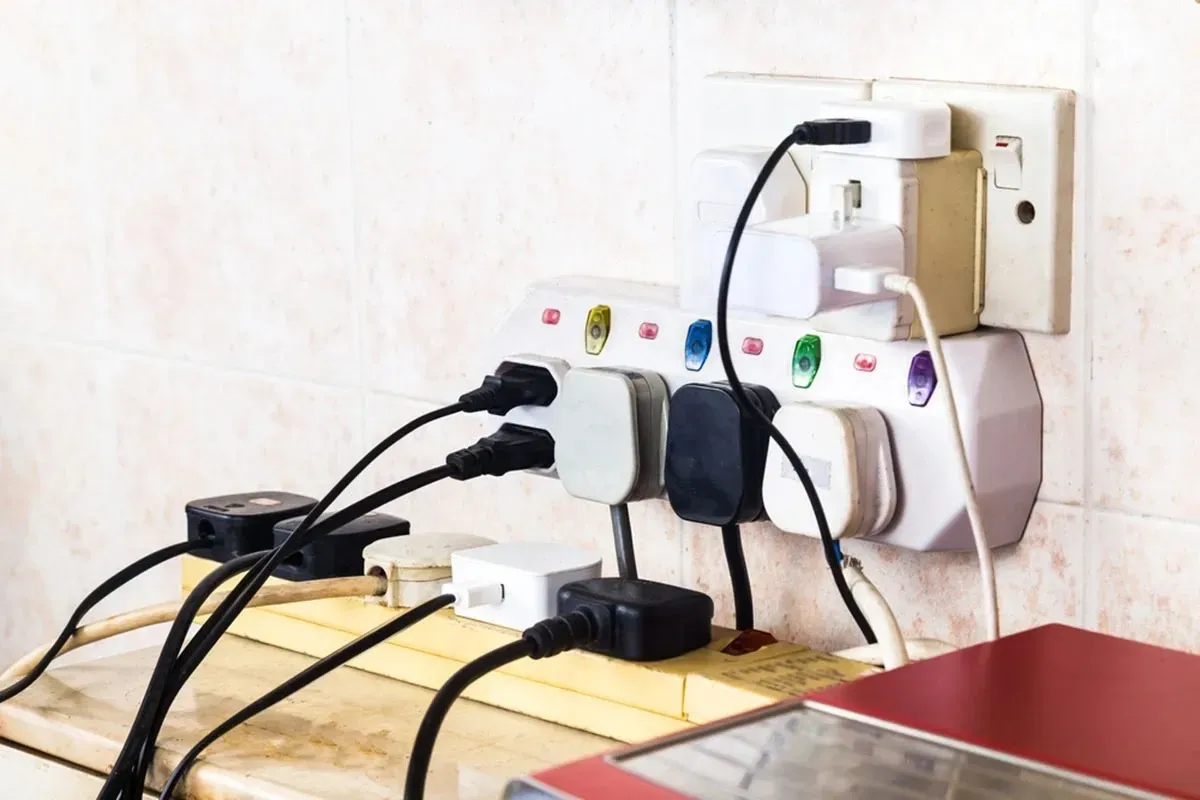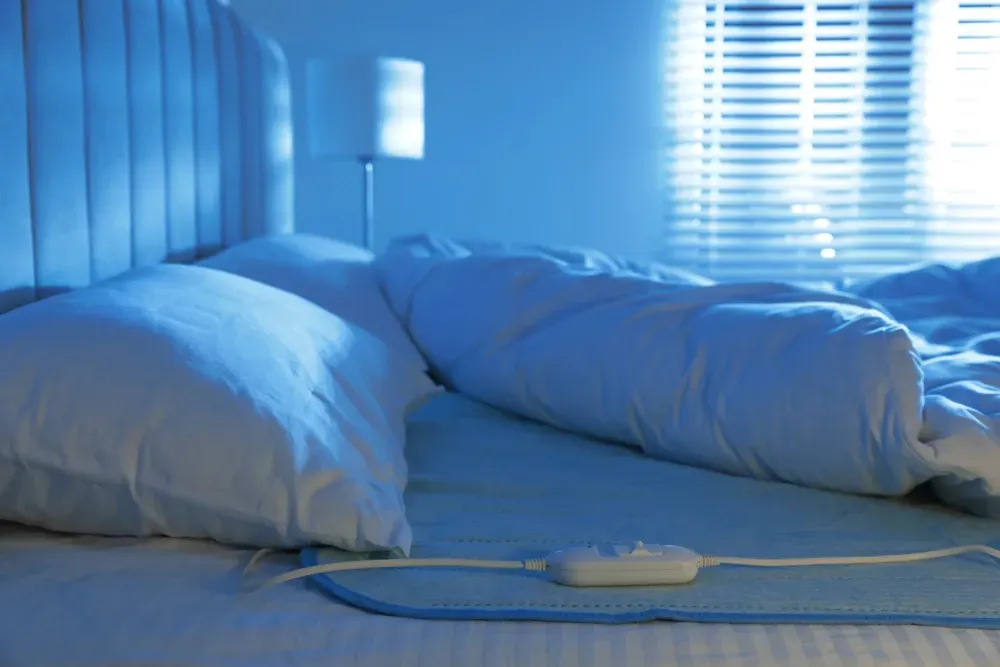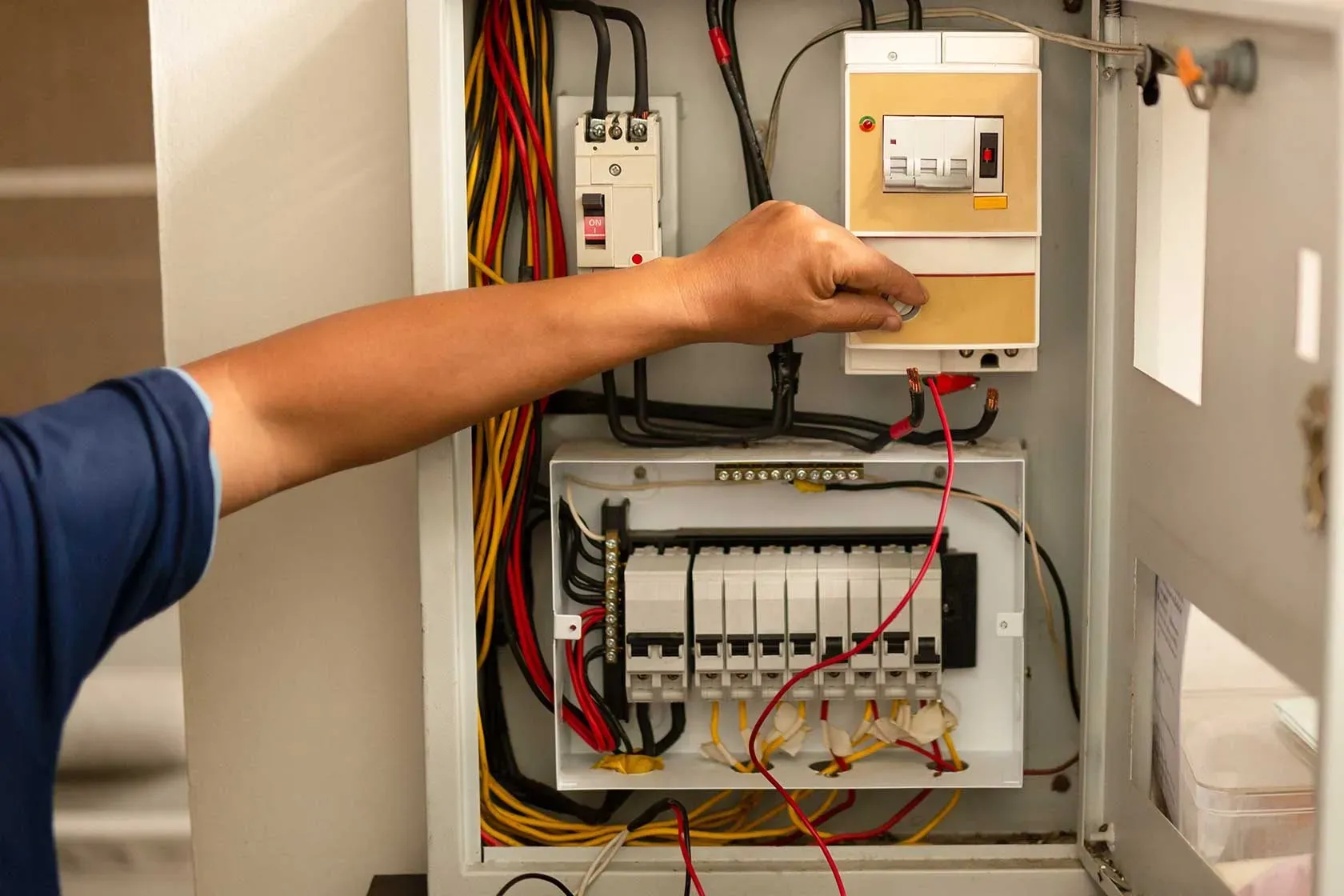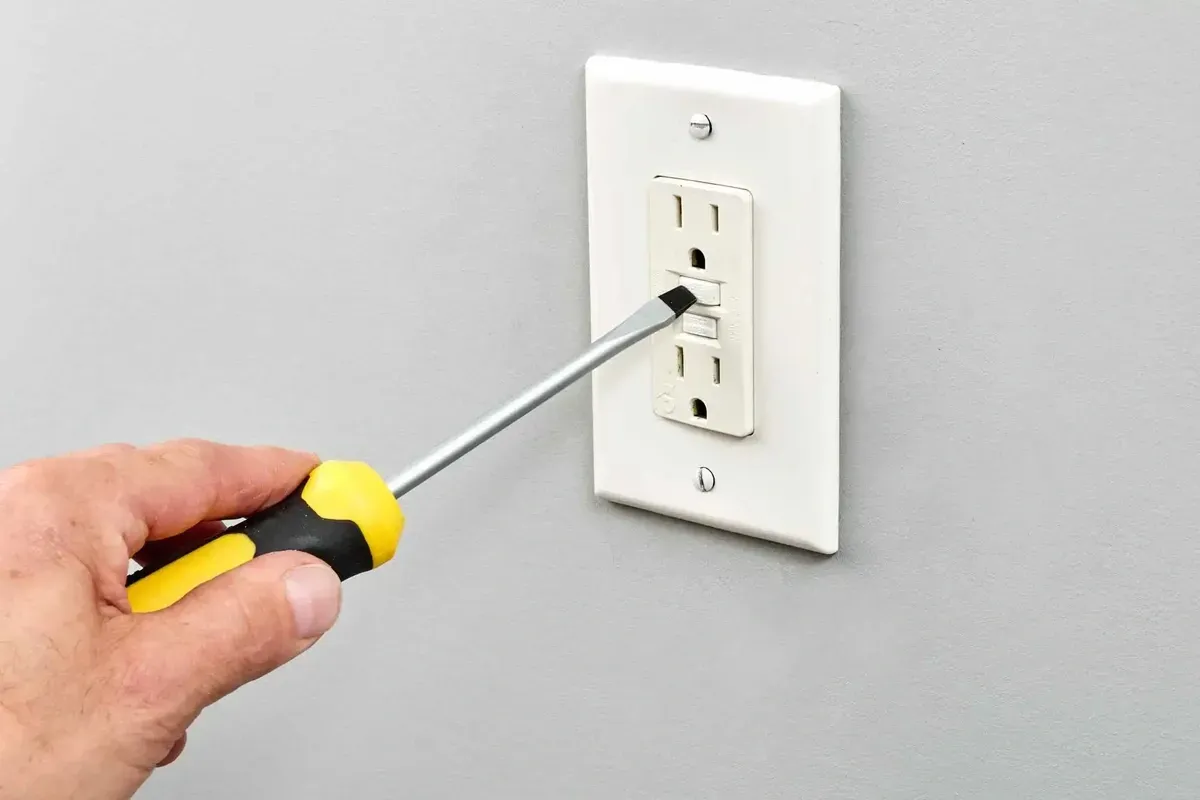Protect Your Home from Electrical Fires: Expert Circuit Overload Prevention
Did you know that overloaded circuits start around 47,700 home fires every year? These fires cost more than $1.5 billion in damage. At Bee lectric, we've seen how a small mistake with electricity can turn into a huge problem. Every day, homeowners unwittingly push their electrical systems above acceptable limits, which generates fire dangers that are hard to see and harm lives and homes.
It's important to know how to keep circuits from being too full, whether you're dealing with lights that flicker, breakers that trip often, or just want to make sure your family is safe. Having a professional check your electrical system and provide regular maintenance can make the difference between a safe house and a huge loss. Don't wait for indications that might not ever come.
How to Prevent Overloaded Circuits: Understanding the Fundamentals

To learn how to keep circuits from getting overloaded, you need to first know what circuit overload entails. When too much electricity passes through a circuit, it can cause an overload. Every electrical circuit in your home has a certain amount of power it can handle, which is measured in amps.For most domestic circuits, this is between 15 and 20 amps. When the connected gadgets use more power than this, they can overheat, which is harmful.
The National Fire Protection Association says that about 13% of all residential fires are caused by electrical problems or failures, with overloaded circuits being one of the main causes. The cascading effect starts when too much current heats up wiring, which slowly breaks down insulation and makes it possible for electrical arcing to happen, which is the spark that starts fires.
To know how to stop overloaded circuits, you need to know that prevention is always better than reaction. When your electrical system starts to overheat, it starts to get damaged in ways that you can't see.Each time it overloads, the risk of fire goes up. A professional electrical evaluation can find weak circuits before they become harmful. This will keep your family safe by making sure that the load is spread out properly and by making system changes when they are needed.
Warning Signs: How to Tell if a Circuit is Overloaded
Knowing how to detect if a circuit is overloaded helps keep your family and home safe from an electrical fire. Your electrical system gives you visible warning indications when circuits are getting close to dangerous overload levels, but a lot of homes don't see these important signs until it's too late.
The most evident indicator of circuit overload is when the circuit breaker trips a lot. It's normal for breakers to trip every now and then, but if they keep tripping from the same circuit, that's a sign of chronic overloading that has to be fixed right away. Every time a breaker trips, it keeps your home safe from overheating that might be very bad. However, the problem that caused the breaker to trip still exists until you deal with the high electrical demand.
If outlets, switches, or your electrical panel make buzzing or humming sounds, there are major electrical concerns. These noises are generally caused by loose connections that can't handle too much load or arc faults, both of which are quite dangerous and can quickly lead to a fire. In many cases, scheduled Electrical Facility Maintenance can help identify and fix these issues early, ensuring your system stays safe and functional. Electrical components that smell like they're burning are an emergency that needs to be dealt with right away.
Fire Hazards: Can an Overloaded Circuit Cause Fire?
Can a circuit that is too full start a fire? Yes and the numbers are scary. The U.S. Fire Administration says that there are about 24,000 electrical fires per year and overloaded circuits are a big reason why. These flames kill about 295 people, hurt 900 more and damage property worth more than $1.2 billion every year.
The change from overload to fire often happens slowly, which makes these events quite dangerous. Unlike evident electrical problems that trip breakers right away, chronic overloading causes harm to build up over time. Many homes built before 1970 have electrical systems that weren't made to handle as much electricity as they do now. Original 60 amp electrical panels can't safely handle the loads that modern appliances put on them, yet many homeowners don't know that they do this every day. When old cloth or rubber wire insulation breaks down because of current electrical needs, the risk of fire goes up a lot.
In the real world, overloaded circuits can swiftly lead to fires. When wire gets too hot, it might start fires in neighboring cabinets and anything inside them. This has happened many times when kitchen circuits were overloaded with too many equipment. Space heaters, TVs and charging devices have put a lot of load on bedroom circuits, which have ignited fires that killed people while they were sleeping.
Proven Strategies: How Can You Prevent an Overloaded Circuit
To learn how to keep an overloaded circuit from happening, you need to use a number of tactics that work together to keep the electrical system safe. Professional electricians suggest a complete approach that includes adequate load distribution, upgrading equipment and regular maintenance.
Don't daisy chain power strips and extension cords, which lowers the risk of overload right away. Many people make their homes unsafe by connecting power strips to extension cords or joining many power strips together. This method skips circuit protection and puts too much electrical demand on a few connection points. Never go beyond the rated capacity of power strips that have built in overload protection.
Make sure that all of your devices and lights have the right wattage ratings. Putting in light bulbs with more watts than recommended might overload the circuits and utilizing equipment above their intended capability puts extra stress on the electrical systems. Check the manufacturers specifications to make sure that all of your electrical equipment is working within their intended range.
When used correctly GFCI and AFCI protection add further safety on top of basic overload protection. Ground Fault Circuit Interrupters stop electrocution in wet places while Arc Fault Circuit Interrupters find dangerous arcing conditions that can start fires even before an overload happens. By doing load calculations and planning for circuit capacity you can make sure you know the limits of your electrical system and plan for safe use.
Smart Load Management: Electrical Safety Best Practices
The first step in good load control is to know the limits of circuit capacity. Standard home circuits run on either 15 or 20 amps and different uses need different amounts of power. Fifteen amp circuits can safely take about 1,800 watts of electrical load, although electricians say that continuous loads should be limited to 1,440 watts to be safe.
By figuring out how much power your devices need and how much power they can handle you can make smart choices concerning circuit loading. Check the wattage or amperage ratings on the nameplates of your appliances then figure out the overall circuit load to make sure you stay under safe limits. To change watts to amps just divide watts by voltage (which is usually 120 volts for regular outlets).
By carefully placing appliances and distributing circuits you can avoid overloading by dispersing electrical needs across your home. When planning electrical loads don't put a lot of high wattage appliances on the same circuit and think about how often you use them. To keep circuit capacity from being exceeded, stagger the operation of devices that use a lot of power.
To use extension cords safely you need to know what they can and can't do and only use them as a temporary fix. Heavy duty extension cords can safely handle short bursts of high energy but regular residential extension cords can't safely power big equipment. Never run extension cables through walls, under carpets or through doorways where they could get damaged by people walking on them.
System Upgrades: When Professional Electrical Work is Necessary
If your home has frequent breaker trips even when you manage the load correctly, if the circuits don't have the capacity for modern electrical needs or if the panels are old and don't have modern safety measures it's time to upgrade your electrical panel. Because they have documented safety flaws that make electrical protection less effective, Federal Pacific, Zinsco and other bad panel brands need to be replaced right away. Modern circuit breaker technology has stronger safety features, better overload protection and the ability to work with GFCI and AFCI devices. Compared to older fuse systems or breaker designs modern breakers are more reliable and easier to take care of.
Current electrical rules say that AFCI and GFCI must be installed in most homes. Arc Fault Circuit Interrupters find harmful arcing conditions and turn off the power before fires may develop. Ground Fault Circuit Interrupters keep people from becoming electrocuted in places where water and electricity are present. When you upgrade your electrical system, you get a better return on your investment since it makes your home safer raises its value, lowers your insurance premiums and gives you peace of mind knowing that it meets modern safety requirements.
Expert Solutions: Professional Electrical Safety Services
When it comes to electrical safety you can't stress enough how important it is to use a licensed electrician. Licensed electricians have the knowledge, expertise and unique tools they need to safely and effectively find and fix electrical dangers. They know the electrical codes, safety rules and correct installation methods that make sure anything will work for a long time.
Emergency electrical services deal with safety issues that need to be fixed right away and can't wait for an appointment. If you smell burning, see sparks coming from an outlet or have any other electrical emergency you need to call a professional right once to avoid fires or electrocution. Emergency electricians use unique tools that let them safely find and fix serious electrical problems.
Permits and following the electrical code make sure that your electrical system meets all safety and regulatory criteria. Professional electricians know the electrical codes and permit rules that apply to their area. Installing things that follow the code keeps your family safe and keeps you from having problems with insurance or selling your home.
When it comes to electrical repairs insurance companies require skilled installation to safeguard coverage. Many insurance policies say that electrical changes must be done by a registered electrician and professional work requires getting the right permits inspections and paperwork.
Conclusion
It's not just about convenience to keep circuits from being too full it's also about keeping your family safe and protecting your most valuable investment. It's evident from the numbers that electrical fires kill hundreds of people every year and cause billions of dollars in damage. However, most of these incidents could be avoided if people followed correct electrical safety rules. Knowing how to keep circuits from being too full Recognizing warning indicators and using sensible load management measures can greatly lower your risk of fire.
But knowing how to do things yourself isn't enough for electrical safety. Your family deserves full protection which includes regular maintenance professional electrical assessments and timely system improvements. Don't take chances with electrical dangers when there are easy ways to fix them. Beelectric is dedicated to keeping your house safe with competent electrical services that stop overloaded circuits from turning into tragedies the next day.
Frequently Asked Questions
Q: How often should I have my electrical system inspected?
A: Professional electrical inspections should be conducted annually for homes over 25 years old and every 3-5 years for newer homes to identify potential overload risks and safety hazards.
Q: Can I reset a tripped breaker myself?
A: Yes, but only after unplugging devices from the affected circuit and allowing it to cool down. If the breaker trips repeatedly contact a licensed electrician immediately as this indicates a serious overload problem.
Q: What's the difference between a 15-amp and 20-amp circuit?
A: A 15-amp circuit can safely handle 1,800 watts of electrical load, while a 20-amp circuit can handle 2,400 watts, making 20-amp circuits better for high demand areas like kitchens and bathrooms.
Q: How many devices can I safely plug into one outlet?
A: Never plug more than two appliances into a single outlet and avoid using multiple high wattage devices simultaneously on the same circuit. Use power strips with built in overload protection for multiple low power devices.
Q: When should I upgrade my electrical panel?
A: Upgrade your electrical panel if you have frequent breaker trips, a panel over 25 years old, insufficient circuits for modern needs or outdated brands like Federal Pacific or Zinsco that pose safety risks.



